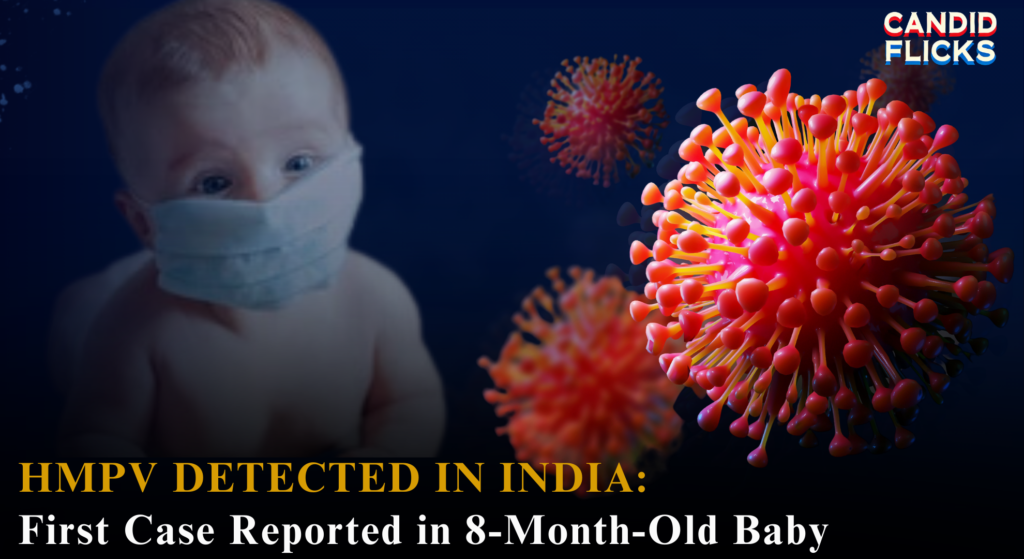HMPV Detected in 8 Month Year Old Baby in India.
Human Metapneumovirus (HMPV) Detected in India: A Rising Global Concern
The first case of Human Metapneumovirus (HMPV) in India has been reported in Bengaluru, Karnataka, marking a significant development in the fight against respiratory illnesses. An 8-month-old baby tested positive for the virus, which has been surging in China and other countries. This discovery has brought HMPV to the forefront of public health discussions in India, with experts stressing the importance of awareness and preventive measures.
What is Human Metapneumovirus (HMPV)?
HMPV is a respiratory virus first identified in 2001. It belongs to the Paramyxoviridae family, closely related to respiratory syncytial virus (RSV). HMPV is a leading cause of acute respiratory infections, especially in children, the elderly, and immunocompromised individuals.
Symptoms of HMPV
- Fever
- Runny nose
- Cough
- Sore throat
- Shortness of breath
- In severe cases: bronchitis or pneumonia
Transmission
HMPV spreads through:
- Respiratory droplets from coughing or sneezing
- Direct contact with infected individuals
- Contaminated surfaces or objects
The virus has an incubation period of 3-6 days, and its symptoms often overlap with those of other respiratory illnesses.
First Case in India: Details from Bengaluru.

The first Indian case of HMPV was identified in an 8-month-old infant at a private hospital in Bengaluru. The baby exhibited symptoms such as:
- High fever
- Breathing difficulties
- Persistent cough
After detailed testing, the child was diagnosed with HMPV. Doctors managed the case with supportive care, including oxygen therapy and hydration. The baby is reportedly recovering, but this case highlights the need for increased surveillance of respiratory infections in India.
Global HMPV Trends
China’s HMPV Surge
China has reported a significant rise in HMPV cases, particularly in children under 14. According to the Chinese Center for Disease Control and Prevention (CCDC), HMPV accounted for 6.2% of positive respiratory illness tests and 5.4% of hospitalizations for respiratory infections. Overcrowded pediatric wards and concerns over healthcare capacity have drawn comparisons to the early days of the COVID-19 pandemic.
Other Countries
- United States: Seasonal HMPV infections are well-documented, with peaks in late winter and early spring. The Centers for Disease Control and Prevention (CDC) monitors the virus closely.
- Europe: Countries like the U.K., France, and Germany have reported HMPV cases in children and the elderly, emphasizing the importance of seasonal preparedness.
- Southeast Asia: Malaysia and Singapore have seen increases in HMPV cases, prompting health authorities to issue public advisories.
How is HMPV Similar to and Different from COVID-19?
While HMPV has drawn comparisons to COVID-19 due to its respiratory nature, there are notable differences:
- Discovery: HMPV was identified in 2001, predating COVID-19 by nearly two decades.
- Transmission: Both spread through respiratory droplets, but HMPV is less transmissible.
- Vaccines: Unlike COVID-19, there is currently no vaccine for HMPV. Treatment focuses on managing symptoms.
- Impact: HMPV primarily affects young children and the elderly, whereas COVID-19 impacts a broader demographic.
Challenges in Managing HMPV
Lack of Awareness
HMPV is not widely known among the general public, which can delay diagnosis and treatment.
No Specific Treatment
Currently, there are no antiviral medications or vaccines for HMPV. Treatment involves supportive care, such as oxygen therapy, fever management, and hydration.
Overlapping Symptoms
HMPV symptoms are similar to those of other respiratory illnesses, such as RSV and influenza, making diagnosis challenging without specialized testing.
Preventive Measures
Healthcare experts emphasize the following measures to prevent the spread of HMPV:
- Hand Hygiene: Wash hands frequently with soap and water for at least 20 seconds.
- Masking: Wear masks in crowded places to reduce droplet transmission.
- Avoiding Crowded Areas: Especially for children and elderly individuals during peak seasons.
- Disinfection: Clean and disinfect frequently touched surfaces.
- Early Medical Attention: Seek prompt care if symptoms like difficulty breathing or persistent fever occur.
India’s Preparedness
The Indian healthcare system is gearing up to tackle potential HMPV outbreaks. The National Centre for Disease Control (NCDC) is closely monitoring cases and coordinating with state health departments to enhance surveillance of respiratory illnesses. Public health advisories are being disseminated to educate citizens about symptoms and preventive steps.
Hospitals are encouraged to ramp up testing capabilities, particularly during winter when respiratory illnesses peak. Pediatric wards in urban centres are preparing for a potential rise in cases.
Public Health Implications
The emergence of HMPV in India underscores the need for robust public health measures. Increased awareness, early diagnosis, and preventive care are vital to managing this respiratory virus. While the current case in Bengaluru has been successfully managed, the potential for wider spread cannot be ignored.
With respiratory viruses like HMPV gaining global attention, India must remain vigilant to protect its most vulnerable populations.